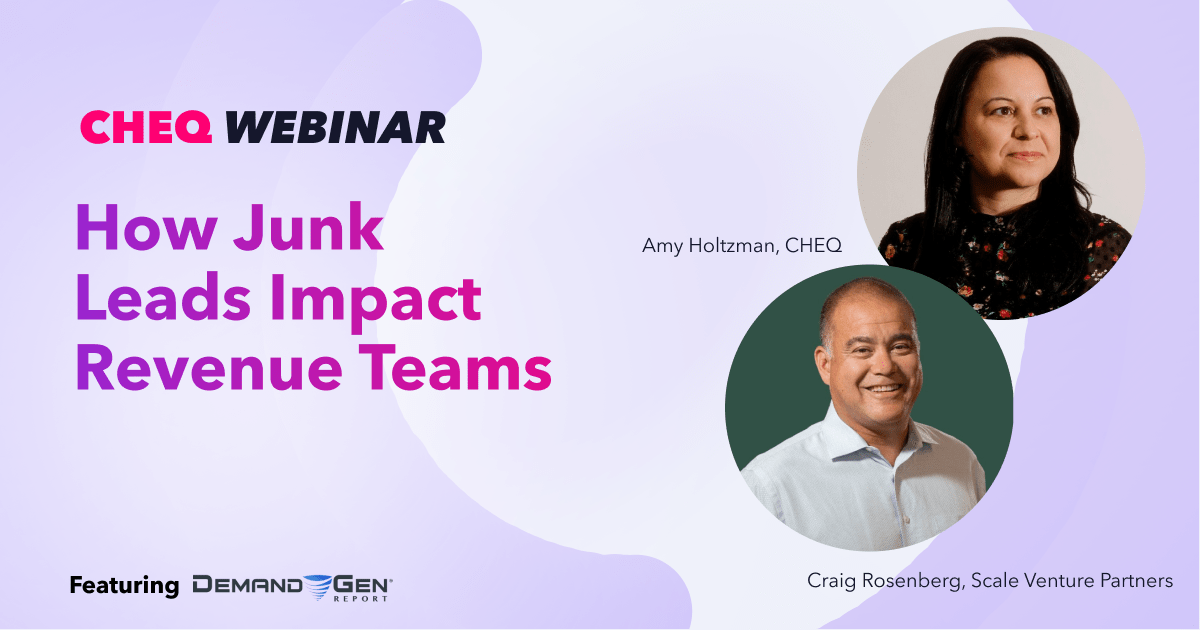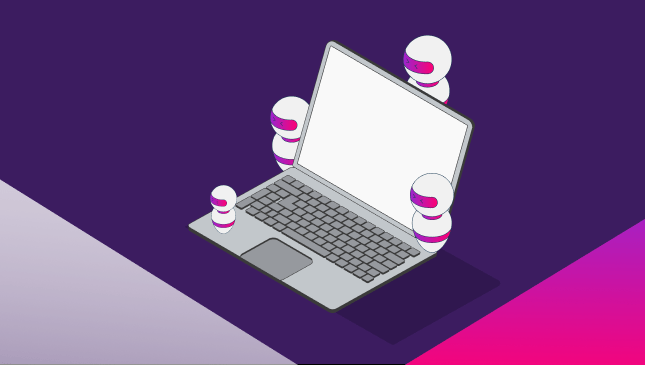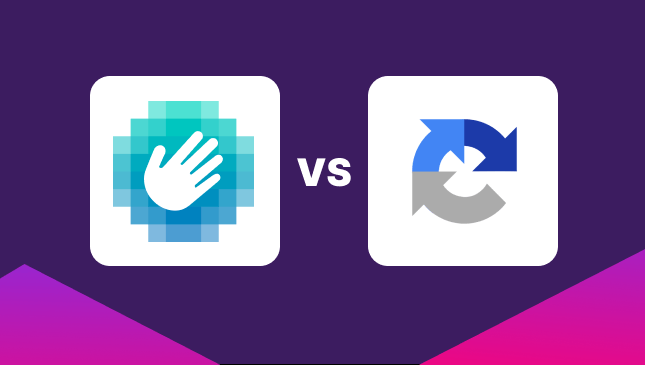Rich Media: The Ad Campaign You Should Be Using
Oli Lynch
|Marketing | August 22, 2022

Although it’s not a new tool, rich media is becoming a bigger piece of the digital marketer’s toolkit. But what exactly is rich media?
If we consider traditional media formats such as text ads, video ads, or display ads, rich media uses all of these to create a nifty package (and one that people are more likely to engage with).
You have probably seen and even engaged with rich media before.
But what is rich media? How can you use it? And does it even work that well?
What is rich media?
Rich media is a form of advertising that uses dynamic or interactive elements to draw the viewer’s engagement.
Often, by using eye-catching visuals (usually video or animation), the viewer is encouraged to click on the ad to expand the experience. There may also be features such as polls, live video streams, or social media feeds.
The ad is embedded in a site, much like any other banner. But rather than a simple animation or static image, there might be a video playing or other form of more dynamic content.
And, as you roll over the banner, it expands to take up more screen space or allows you to expand, interact, or share with a friend.
By nature of being more interactive, this more ‘fun’ form of advertising hopes to capture our attention and engage us. At least more than we might do for a standard ad…
Native, in-feed, interactive
Putting it all together, these forms of rich media advertising tend to be embedded within the publisher feed to feel as unobtrusive as possible.
The idea is that the ad doesn’t feel like an ad.
But…
As you scroll past, something about it catches your eye. It might be the fact that the image jumps out at you or that the ad reacts to your touch, even if you aren’t directly interacting with it.
Take a look at Google’s rich media formats as a great example.
As we become more familiar and jaded with advertising, the methods employed by rich media spark curiosity in the viewer. Or that’s the theory, at least.
Of course, it also depends on the ad and the targeting. The best ad will still not spark interest in someone with zero interest in the service.
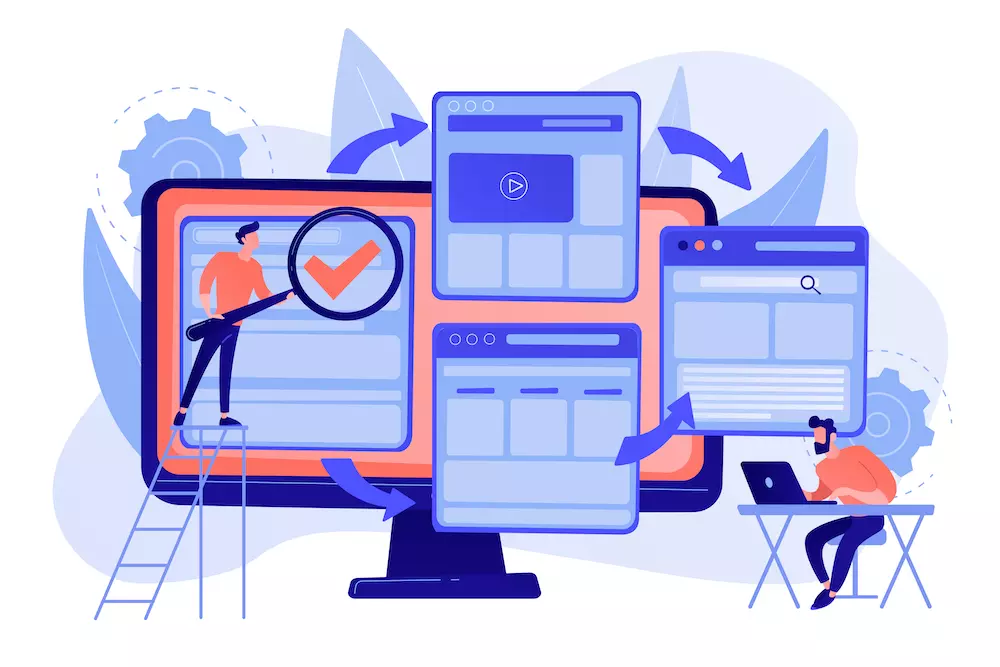
Why use rich media ads?
Although creating rich media ad campaigns is more technical and (usually) more expensive, several benefits make it worthwhile.
1. Improved engagement
For most advertisers, getting the attention of their target audience is the main struggle. Improving those click-through rates and conversions is the name of the game, and this is where rich media can be useful.
In fact, one study found that rich media ads outperform standard banner ads by up to 267%. (source)
Although you will also need quality creative content, the features of rich media make it more likely that your audience will engage.
And, with reduced tracking and targeting for advertisers (read more about it here), using features such as embedded social media or the option to share could even help your ads be seen more widely.
2. Quality publishers
Another appealing factor of rich media is that it’s usually quality publishers that can host these enhanced ads. Banners and simple box-style ads can be crammed into any site that has been approved, which can include sites with low-quality content.
So, to increase the chances of your ads being hosted on a more high-profile publishing site, consider using rich media.
This also has the benefits of a higher volume of views and (hopefully) more reliable traffic quality. We’ll take a look at more about site traffic later in this article…
3. Stand out from your competitors
Are your competitors running rich media ads? Probably not…
Due to the cost of both producing and running rich media ads, most businesses will lean toward the standard end of the spectrum. For potential customers, this means they probably see banner ads or pre-roll video as standard and (let’s be honest here) see it as an annoyance.
Because rich media ad campaigns demand a creative approach, this means you’ll stand out simply due to the presentation of the ad.
And by using additional interactive elements, customers are more likely to remember your brand vs. the same old ads from your rivals.
4. More data = good
When you run a standard display campaign, such as a banner or a video ad, you get some useful metrics. But, thanks to the way tracking is changing in 2022, much of this is going to change in the coming months and years.
Using rich media ads gives you some useful additional metrics. For example:
- Video display time (or percentage of video viewed)
- Content expanded time (or how long the content is viewed in expanded form)
- Number of expansions (how often your expandable content is viewed in full)
- Interaction rate
- Interaction time
In short, you can get useful insights into how your audience uses your interactive content.
5. Multiple click links
With a banner ad, you’re usually limited to one clickable link. But rich media ads allow you to add other clickable elements to improve your chances of a higher CTR.
For example, you might still have your standard CTA ‘Click Here to Find Out More.’ But you could also add a social sharing button, a selection of products, or links to specific categories within the ad.
Which platforms offer rich media ads?
Most ad platforms offer rich media campaigns, including Google Ads, Meta/Facebook, and Microsoft Advertising.
Rich media on Google is called Studio (Read the Google Studio help here).
On Facebook, rich media ads used to be known as Canvas – but are now called Instant Experience.
Several rich media formats also come as part of their general Meta for Business suite. For example, advertisers can run slideshow ads, carousel ads, playable ads, and popular formats such as Stories on both Facebook and Instagram.
Microsoft Ads offers Multimedia ads for their business users, which is effectively rich media advertising.
And other platforms, such as AdRoll and Taboola, also offer rich media advertising campaigns.
Rich media formats
As you might imagine, the world of rich media advertising offers a huge range of creative advertising opportunities.
These highly interactive ads also vary between sites. For example, a YouTube rich media campaign will differ from a similar campaign on Facebook Ads.
Rich media ads can be displayed as:
- On-page ads – Usually banners, fitting the standard display ad dimensions, but with added features such as embedded video or a browsable catalog of items
- Out-of-page ads – This normally refers to pop-up ads but can also refer to expandable ads
- Interstitial (app) ads – Ads that display while an app is loading or between pages are known as interstitial ads.
- In-stream ads – Displayed before videos (pre-roll) or during (post-roll), especially on sites like YouTube
Banner ads
Perhaps the most obvious way to embed an interactive ad, banner ads offer opportunities across most standard websites.
With the option to run a masthead style/top-of-the-page banner, an in-feed banner, or a sidebar box, banner ads are a flexible, rich media format. They can also be expanded easily, either using a hover-over or click-to-expand option.
As most of us are familiar with banner advertising online, this is a relatively unobtrusive way to venture into rich media ads.
Native content
Making the ad content appear as if it’s an extension of the site, native media blends into the feed. An example of this is Facebook Ads or Instagram Ads, which fit the look and feel of the user feed but with ‘sponsored’ content.
This can also be created to blend into popular publisher sites or video platforms like YouTube without being too intrusive.
Slider ads
Usually found in the bottom corner of a webpage, slider ads can be a video or a form of interactive media. Also, they usually stay in place as the user scrolls until either closed or engaged with where they usually expand.
A typical slider ad might include a video that expands to the full page, perhaps with a frame, too.
In-app/Interstitial
Full-screen ads that display within an app, usually between page loads, are referred to as interstitial ads. A rich media approach to these ads can embed playable content, video, or other interactive elements.
With a CTR of 4% on interstitial ads, this compares well to display ads such as banners.
Examples of rich media ads
These are some good examples of how rich media can look, with some useful interactive elements.
Benadryl

This expanded rich media ad contains an interactive symptoms diagnosis tool. By clicking the symptoms you’re experiencing, the ad then takes you to the page to buy the correct product.
You can also click on the ‘shop now’ icon to go straight to the landing page for the campaign.
Marvel/Doctor Strange
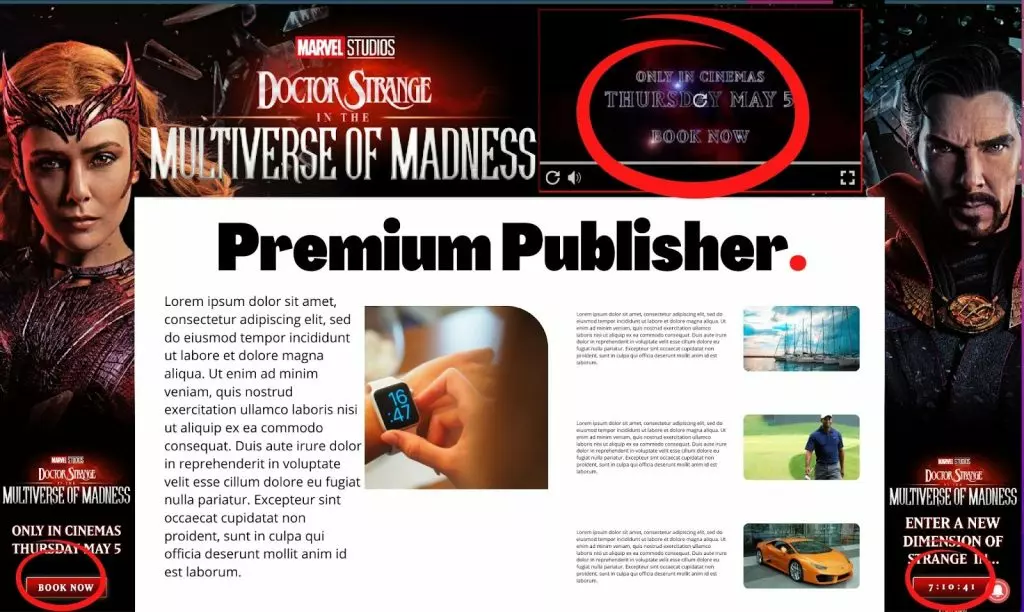
This masthead rich media campaign wraps around a premium website and includes autoplay video – which is silent by default.
The video can be clicked to maximise the viewing area, and two other clickable sections take you to the Marvel/Disney site to book tickets and view other trailers.
Fish4Jobs

Why search for a job when the job search can come to you? This job search site embeds its latest openings into a local news site. A click on one of the roles takes you straight to the listing, or by clicking the ‘send me jobs by email,’ you’re taken to a landing page to input your details.
How to make rich media ads
If you’re considering doing a rich media campaign, you’ll probably need to hire an agency specializing in creative ads. Or, if you have access to a creative team within your company, you might be able to create one in-house.
Rich media ads take a level of expertise, and there currently isn’t an easy-to-use rich media campaign builder.
Each platform has its own requirements and formats for creating rich media ads, so it’s best to check the details with your ad platform of choice.
Here are some easy links to help you…
Facebook Ads Instant Experiences
Keep control of your ad traffic
Putting together a rich media campaign is more costly on multiple fronts.
Firstly, creating a rich media ad is more expensive than simply creating a text ad or display ad.
Secondly, the CPM and CPC are more expensive for these ad campaigns too. So, getting value for your ad spend is even more important than usual.
In the age of reduced tracking and targeting, keeping control of your clicks and ad views is challenging. Click fraud and ad fraud are also responsible for wasting huge sums of advertisers’ money, with an estimated $40 billion wasted on invalid traffic in 2021.
Find out more about click fraud here.
Marketers are increasingly relying on third-party solutions to avoid bots or competitors clicking their ads and to maximise both their ad reach and ROAS.
As the industry leader in click fraud prevention, CHEQ Essentials is used by 90% of fraud-blocking marketers.
Find out why with a FREE traffic audit. Sign up for CHEQ Essentials’s 7-day trial to find out who clicks your Google, Facebook, or Bing Ads and block those bad clicks.







